Flurry of meteorites… A few days after the small asteroid 2024 BX1 entered the Earth atmosphere above Germany, less than 3 hours after its discovery, hundreds of meteorite hunters rushed as soon as January 21st and inspected the strewn field area, despite harsh winter conditions, snow covered grounds, -12°C freezing temperatures… “The ground was still snow covered, and we were looking for black crusted objects“, explains Jürgen Rendtel (Figure 2). A few days after, they found it! First announced meteorite discoveries occurred on January 25, which is a bit more than 3 days after the fall (on January 21st, 00h 32min UT), quickly followed by dozens of recovery announcements (Figures 1a to 1f and 3) near Ribbeck village (Brandendurg, Germany), 45 km West of Berlin, which was famous for his pear tree, and will now be famous for its meteorites, too! Because the ones ever recovered show a rock that is far from hunters expectations!
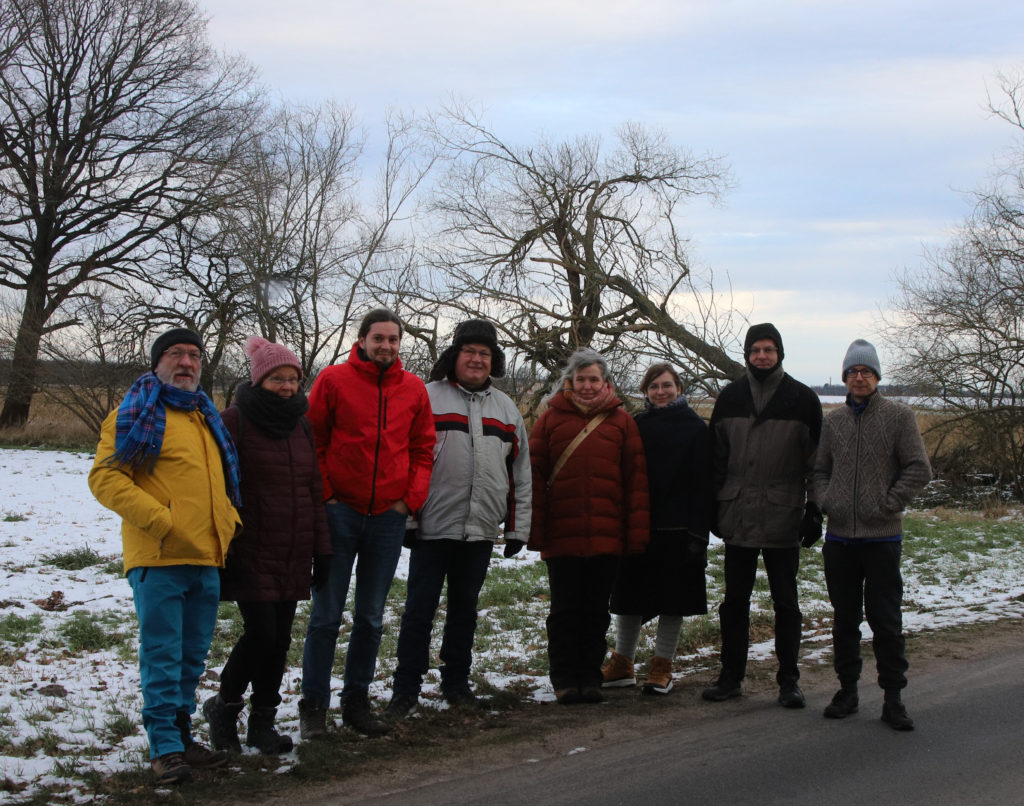
A very likely aubrite meteorite fall in Ribbeck
What a meteorite! As expressed by Jürgen Rendtel, most fresh meteorites display what’s called a black fusion crust, which is one of the particularities of a meteorite, which helps highlighting it in a clear rocky environment. First sights of the 2024 BX1 meteorites shows no dark fusion crust. Not that the fusion crust is not existing, but it’s a glossy melt translucent crust, showing the inside of the meteorite, which is actually not “classic” (Figures 4a to 4c). This fantastic meteorite is clearly not a chondrite, but very likely an eucrite, or even an aubrite, which should be confirmed when the first analysis of the space rock will be performed.
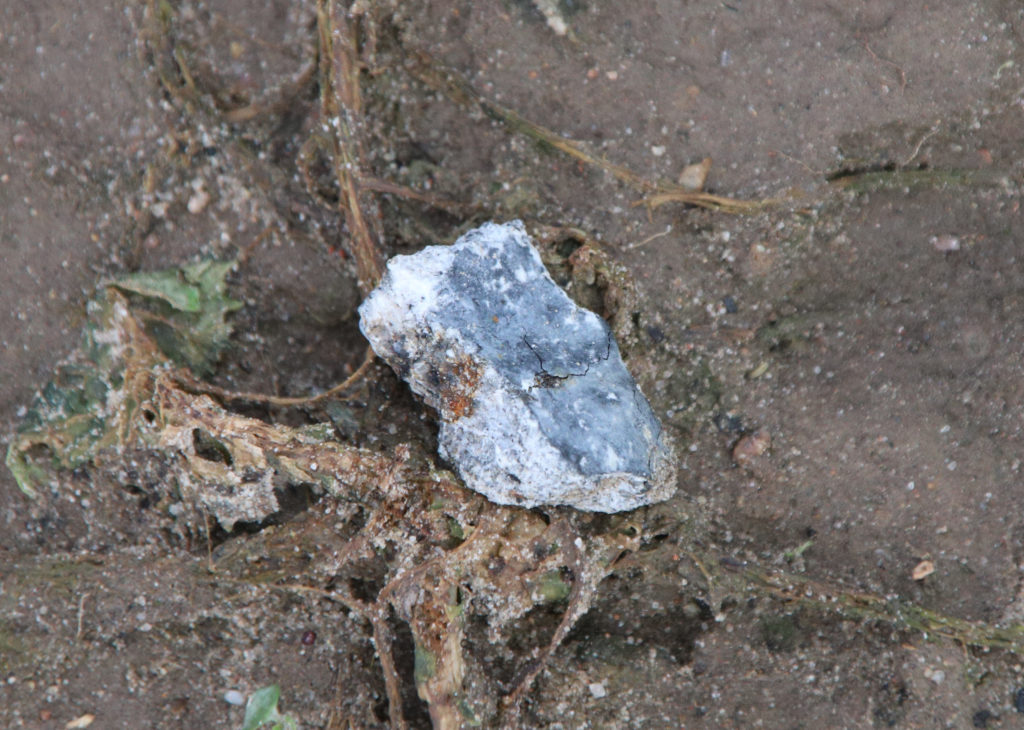
Meteorite hunters, be aware you probably walk on private propriety, so please be law-abiding (Figure 5)!
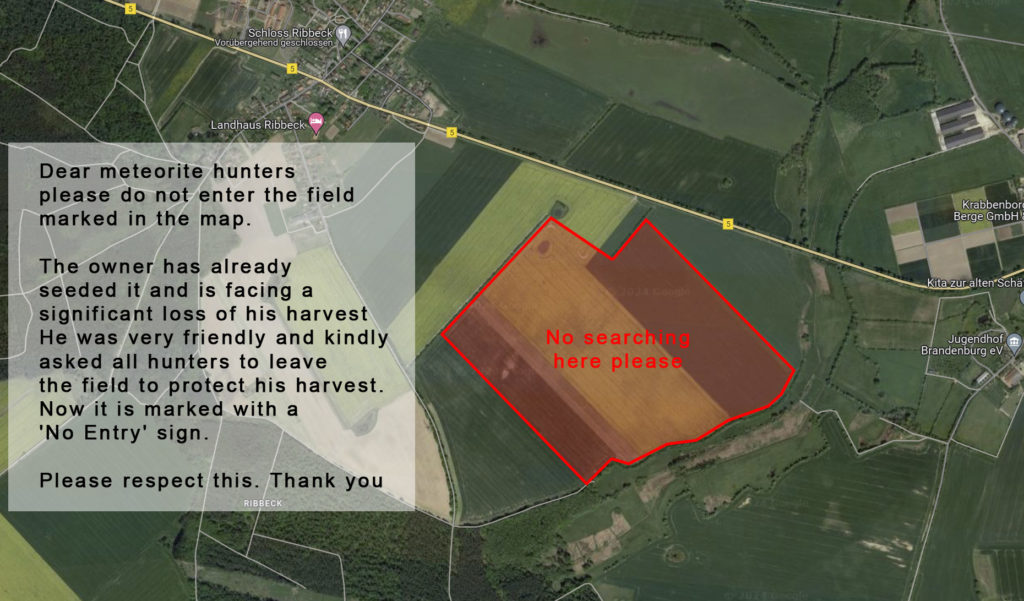
Impressive fireball show over Europe started on January 9th over France…
It started a few days before 2024 BX1 event, on January 9th, 2024, 21h 55min UT, when a very bright fireball enlighted Belgium and neighbouring countries skies (Event #198-2024), although its trajectory was above France and French Ardennes! The fireball reached a -9 magnitude, while it entered the atmosphere with a very steep angle (82°) and a 13.6 km/s entry speed. From Fripon recordings (Figure 6) and calculations (Figure 7), 50 to 200 g meteorites must have survived the nearly vertical atmospheric entry of the meteoroid. Some meteorites hunts were organized the following week-end (Figure 8), but without success.
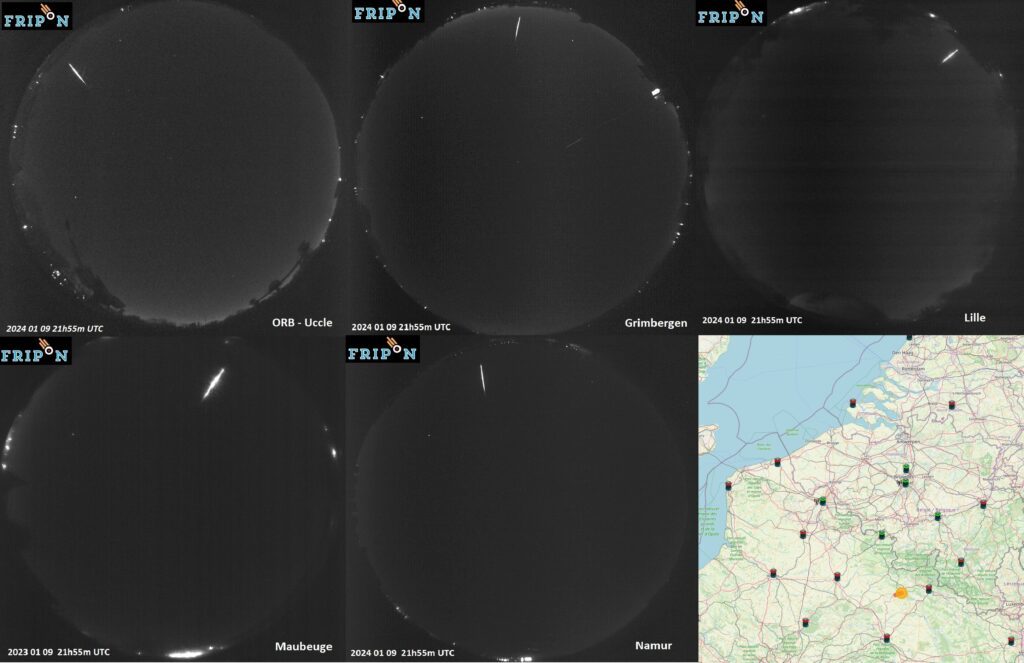
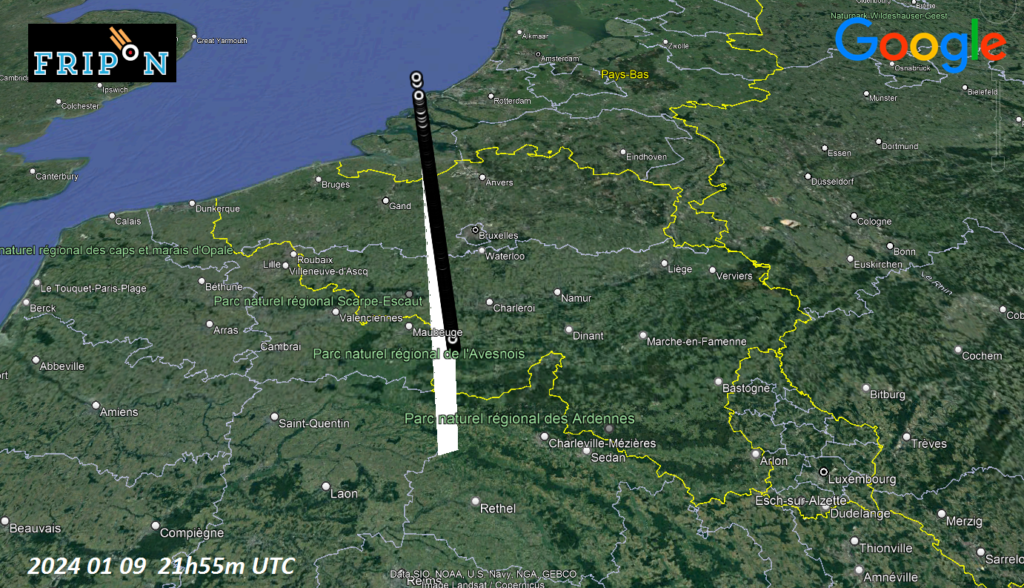

…followed by a Spanish fireball on Jan 16…
A few days after, on January 16th, 2024, 06h 46min UT, another -9 mag. fireball was very widely observed (more than 500 reports for Event #324-2024) from Southwestern France, while it was flying over… Spain! It was recorded by Spanish Fireball and Meteorite recovery Network (SPMN-CSIS) on several cameras (see below) and Fripon video stations, North of the Pyrenees.
GRAN BÓLIDO DIURNO #SPMN160124F REGISTRADO SOBRE #LLEIDA Y #TARRAGONA a las 6h46m41s TUC (7h47 CET). Con decenas de testimonios visuales, así lo captó Cèsar Guasch @MeteoSantMateu desde Sant Mateu, #Castelló/#Castellón. Pasa al listado
🔖https://t.co/Jl0sTvjrSv
Informa @ice_csic pic.twitter.com/rRe8JeiZ8K— Red Investigación Bólidos y Meteoritos (SPMN)-CSIC (@RedSpmn) January 16, 2024
Unfortunately, the high entry speed (32 km/s) of the 650-800 g meteoroid and the low inclination of its trajectory let no chances for meteorites survival.
…and 4 bright meteors on January 27 night over and around Germany!
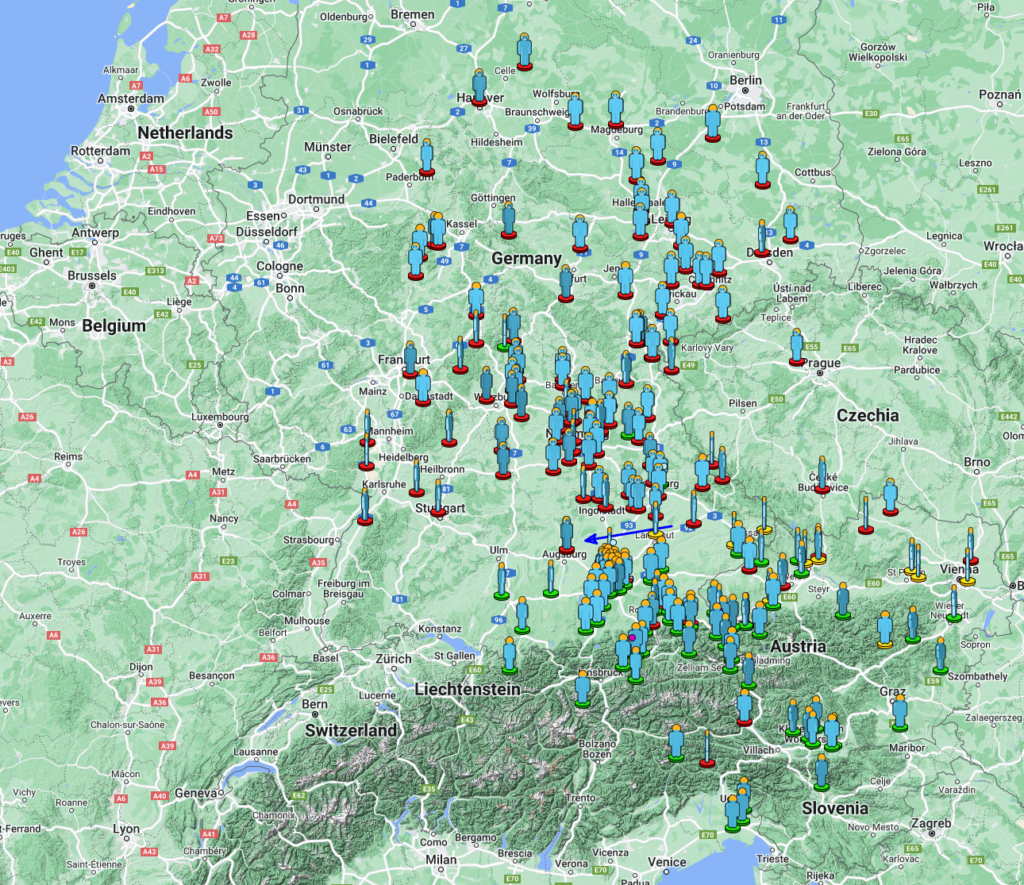
All started with a fireball at 00h 20min UT, on January 27th… It was followed the following night by a very bright fireball was largely observed from Southern Germany on January 27th, 16h 29min UT, while the sky was quite clear: it flew over Southern Germany and was reported by nearly 400 persons (Figure 9, Event #529-2024)! Half an hour later, at 17h 00min UT, another one was recorded from Slovenia, Italy and Austria (Event #569-2024), as the fireball flew over the Adriatic sea. And it followed again by another one at 20h 24min UT (Event #537-2024)!! All those meteors were recorded by Allsky7 network in Slovenia (see video below)!


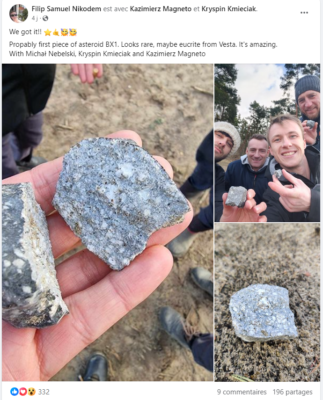
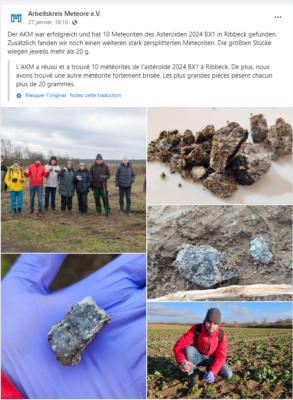

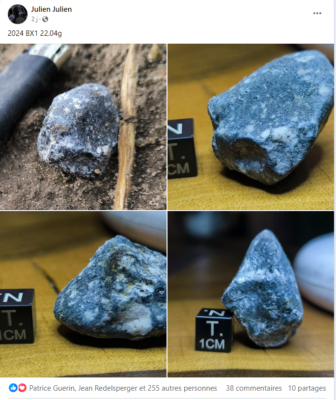
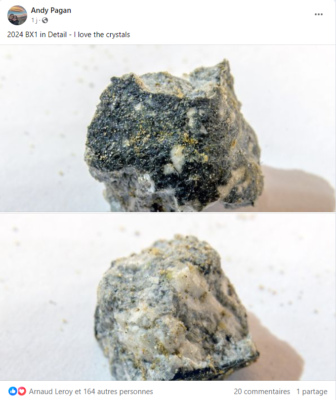

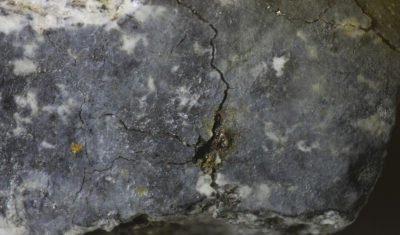
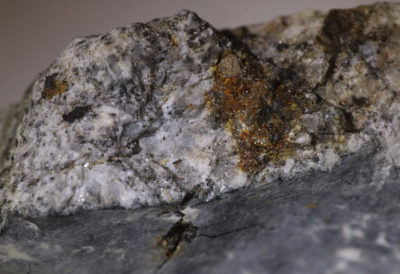
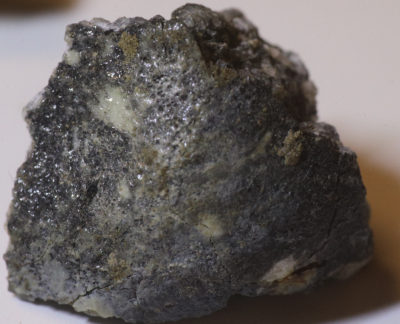


 You saw something bright and fast? Like a huge shooting star? Report it: it may be a fireball.
You saw something bright and fast? Like a huge shooting star? Report it: it may be a fireball.  You counted meteors last night? Share your results with us!
You counted meteors last night? Share your results with us!  You took a photo of a meteor or fireball? You have a screenshot of your cam? Share it with us!
You took a photo of a meteor or fireball? You have a screenshot of your cam? Share it with us!  You caught a meteor or fireball on video? Share your video with us!
You caught a meteor or fireball on video? Share your video with us!
2 comments
Karl, we had several fireball over the W Iberia this last weeks:
Jan. 12 02:30.07, Jan. 19 20:53:00, Jan. 21 20:03:07, Jan. 26 19:08:03.
And a very big one at Dec.15 18:18:25 (but heading to the Atlantic ocean…)
Best,
RG
Dear Rui,
Thanks a lot for the information!
Do not hesitate to send us this kind of information on our email: newsitems@imo.net for us to know such information.
We routinely monitor what is hapenning in skies in the world, but we sometimes overlook some information, so if you see it’s worth discussing, and that we did not, please send us the info 😉
Best regards,
Karl